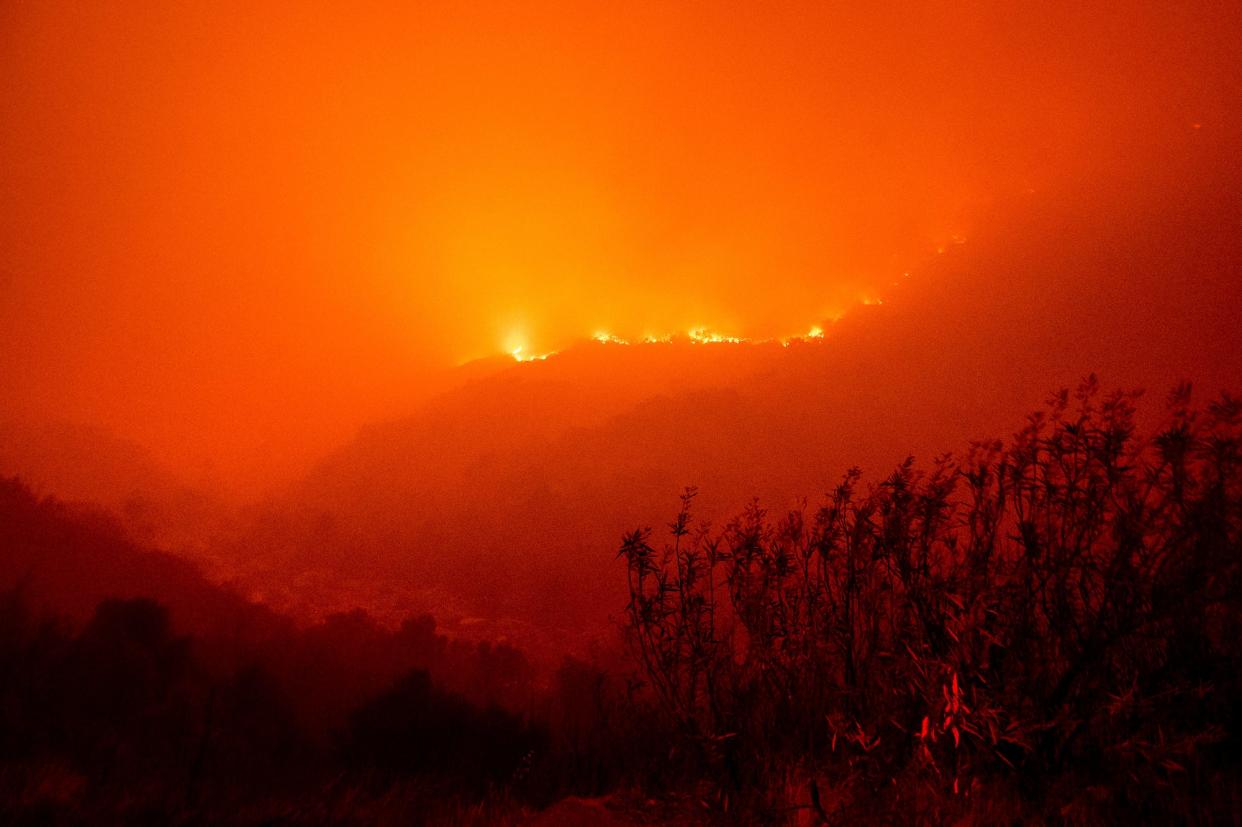After a fire-riddled 15 months, Giant Sequoias get a lifeline with a new bill

An aggressive bipartisan bill to curb fire catastrophes in Sequoia National Forest is looking to pass later this year, if not earlier.
The proposed legislation is led by House Minority Leader Kevin McCarthy (R-Bakersfield-23) and co-author House Committee on Natural Resources Ranking Member Bruce Westerman (R-Ark.) with 75 cosponsors, including Democratic support from Texas Rep Henry Cuellar.
The Save Our Sequoia Act would be a lifeline for the sequoia groves, which in the last two years have seen a 20% decline in its global population due to trending wildfires in the Western Sierra Nevada region.
"Communities and officials on the ground know how to best protect these Giant Sequoias," McCarthy said in a release ahead of the announcement. "But policies and regulations stymie good forest management practices–exacerbated by endless litigation that make removing dead trees and brush nearly impossible."
Earlier this month, the Congressional Budget Office reported that, about 8 million acres, on average, burned each year in wildfires between 2017 and 2021, more than double the average amount from 1987 to 1991.
The report also found preventative care is key, "Managing forests can reduce the risk and severity of wildfires. Techniques to do so include setting prescribed fires, managing wildfires in remote areas, and mechanically thinning forests to reduce the density of vegetation and different types of fuel in a forest."
The bill's main objectives are "focused on 90% project management and 10% reforestation," officials said Tuesday during a press call.
The initial phase will take on the task of clearing potential fire hazards like ponderosa, sugar, and other types of pines in and around up to 5,000 acres per row in the surrounding area. At the same time, the phase prioritizes the creation of a strategy that targets grove zones with the most need for swift rehabilitation.
Spearheading the expert panel is government entities, local state advisers, the Tule River Tribe, and academia experts making up the Giant Sequoia Lands Coalition. The ensemble of specialists will then provide recommendations called protection projects based on their hazardous assessments, which are then taken on by the Forest or Park agencies.
Strike teams will lead the force in removing the hazardous fuel and brush from non-sequoia trees, transportation and disposing of the materials.
The costs associated with the plan come with a steep price tag. Therefore, if the bill is enacted, officials say "it will authorize $325 million over 10 years" focused on delivering results. The money will also assist in funding a Giant Sequoia nursery, which will be transplanted back into the national forest as part of the reforestation strategy after a growing period.
This bill is different from existing laws that apply to all forests
"This applies specifically to the Giant Sequoia groves and the protection projects that are required to be developed in the proposed legislation," lawmakers said Tuesday. "One of the differences with this bill is [that] Congress declares the groves in a state of emergency, and then apply those existing emergency regulations to protection projects that are developed as a result of this bill so they can be implemented on a much quicker basis."
In May, McCarthy and a congressional delegation group visited the Sequoia National Forest and groves to experience the recent damages caused by the waves of past wildfires.
"After seeing the Giant Sequoias firsthand, and understanding the damage fires have caused to our communities," McCarthy said after the visit, "it's clear there is an urgent need to address this crisis through fire prevention and better forest management."
Fire in sequoias
The Trail of 100 Giants located within the Giant Sequoia National Monument opened last month, Sequoia National Forest Supervisor Teresa Benson said
"I'm just so grateful that we still have this area here for people to enjoy," she said. "People come from all over the world to experience the wonder of these trees."
Benson said the trail stands as a "little island of green" amid the destruction of the Windy Fire, which along with the 2020 Castle Fire killed up to a fifth of the world's mature giant sequoia trees.
"You walk through the grove and there's wildlife thriving; birds are chirping away," she said. "You just are so thankful that those trees, some of which are 2,000 years old, are still standing tall."
There was no guarantee that the much-loved monarchs would survive in one of the world's most visited groves, which former President Bill Clinton declared a national monument in 2000.
Last October, the trail became the site of a dramatic scene when firefighters scaled a 150-foot-tall sequoia tree in order to spray the crowns of nearby burning sequoias, saving them from the Windy Fire's incinerating heat.
Inside the monument, foresters fell dead trees and burn them every year, clearing the area of heavy fuels. This annual action, Benson says, is what spared the trail from the Windy Fire's destruction.
A similar story played out in nearby Sequoia National Park. Fire officials credited three decades of prescribed burning for saving General Sherman, the Earth's largest tree by volume, from the KNP Complex Fire.
The KNP and the Windy fires were both ignited by a massive September lightning storm that caused dozens of fires up and down the state. Together, the two fires burned more than 300 square miles across the western slopes of the Sierra Nevada, the trees' only natural habitat.
While the Windy Fire was contained in November, its damage sent massive sequoias toppling over onto roads and campsites, shuttering the forest for months. Many areas of the forest that burned at high severity remain closed.
Sequoia National Forest has received about $30 million in grants to help rebuild infrastructure and complete fuel-reduction projects in the wake of the fires, according to the Forest Service.
This article originally appeared on Visalia Times-Delta: Save Our Sequoia act prioritizes project management and reforestation.

